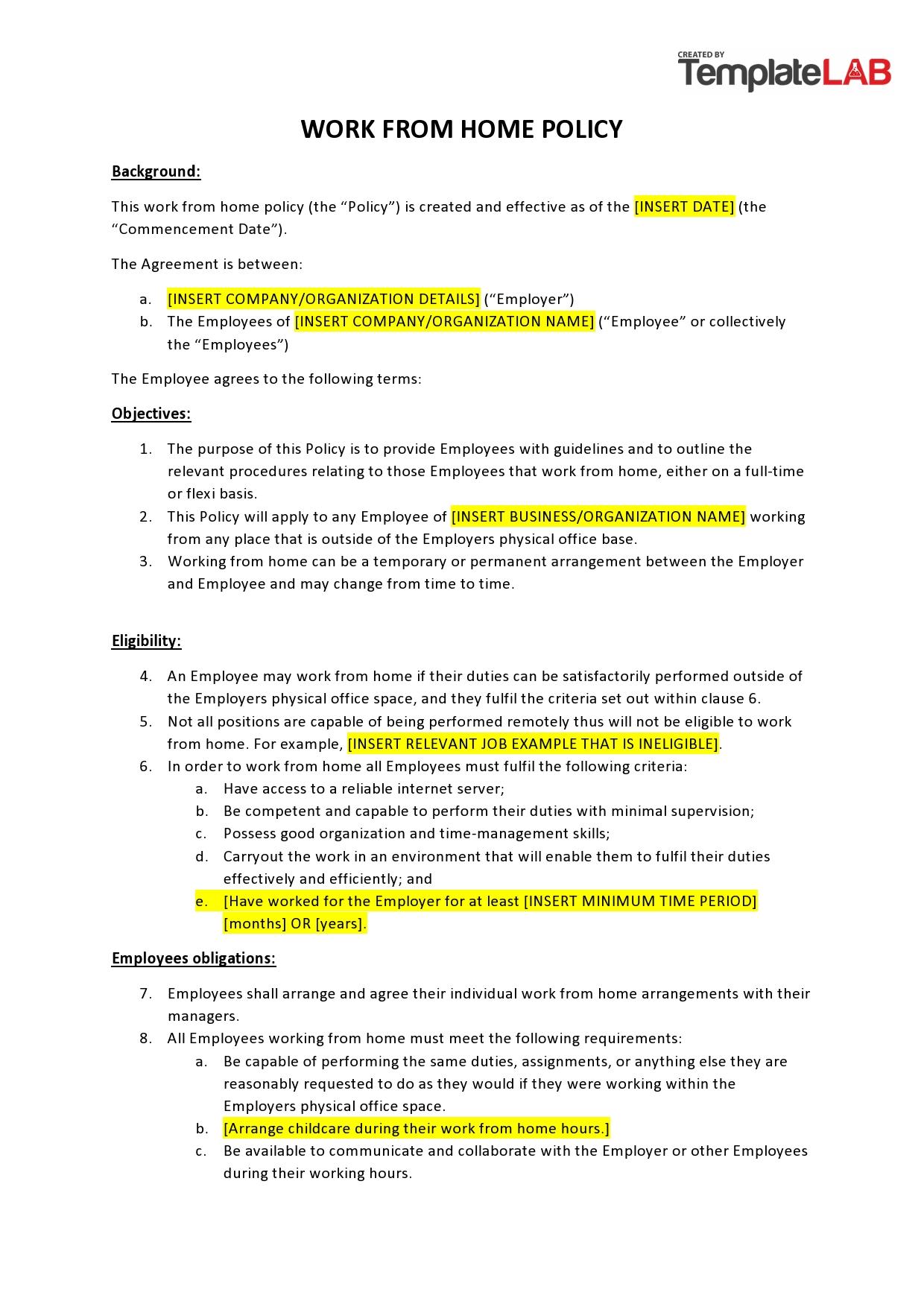As businesses increasingly embrace remote work due to the advancements in technology, it becomes essential to provide clear guidelines to ensure a productive and effective work-from-home environment for employees. Creating a work from home requirements template is an efficient way to establish expectations and provide necessary information to facilitate a smooth transition to working remotely.

Essential Elements of a Work From Home Requirements Template
1. Job Responsibilities and Expectations: Clearly define the roles and responsibilities of the employee working from home, including specific tasks, deadlines, and performance metrics. This ensures both the employee and the organization share the same understanding of the expected work outcomes.
2. Workspace Requirements: Specify the necessary equipment and infrastructure needed to work effectively from home, such as a laptop, reliable internet connection, ergonomic chair, and a quiet and dedicated workspace. Providing clear guidelines helps employees create a conducive environment for productivity.
3. Communication and Collaboration Tools: Outline the communication and collaboration tools that employees will use to stay connected with the team and the organization. This could include video conferencing software, instant messaging platforms, project management tools, and shared file repositories.
4. Work Hours and Availability: Establish clear work hours and expectations for employee availability during the workday. This includes specifying the start and end of the workday, break times, and any required overtime or weekend work.
Additional Considerations for a Comprehensive Template
5. Security and Data Protection: Address security measures to protect company data and assets when working remotely. Include guidelines on using strong passwords, securing home Wi-Fi networks, and following data privacy regulations.
6. Health and Safety: Provide recommendations for promoting employee health and safety while working from home. This could include tips on setting up an ergonomic workstation, maintaining regular breaks, and accessing resources for mental well-being.
7. Performance Monitoring and Feedback: Establish clear processes for monitoring employee performance, providing feedback, and setting goals. Ensure regular check-ins and performance evaluations to maintain productivity and employee development.
8. Expenses and Reimbursements: Outline any expenses that employees may incur while working from home, and specify the reimbursement process. This could include expenses related to internet connectivity, office supplies, and ergonomic equipment.
9. Compliance and Legal Requirements: Ensure the work from home requirements template adheres to relevant laws, regulations, and industry standards. This may include considerations for workplace safety, data protection, and employment rights.
In conclusion, creating a comprehensive work from home requirements template is crucial to support employees in effectively transitioning to remote work. It serves as a guiding document that establishes clear expectations, provides necessary information, and promotes a productive and safe work-from-home environment. By implementing a well-defined template, organizations can empower employees to succeed in their remote work endeavors while maintaining a high level of performance and productivity.
Remember, a work from home requirements template is not a one-size-fits-all solution. Customize it to align with the specific needs of your organization and employees, ensuring a seamless transition to a successful remote work arrangement.